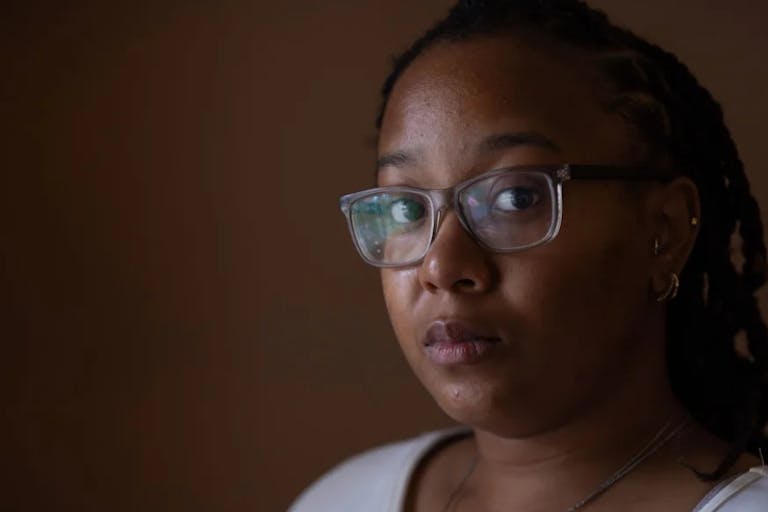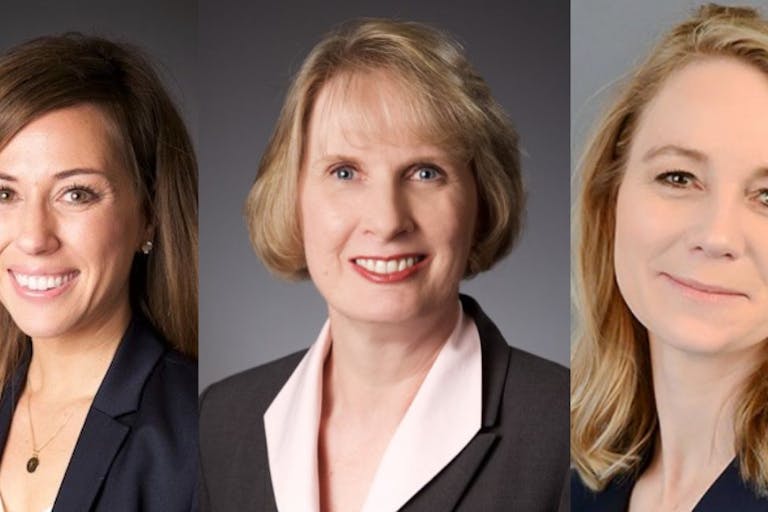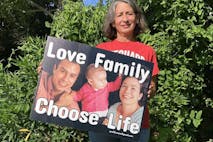
FACT CHECK: Are pro-life laws to blame for arrest of SC woman who delivered baby in a toilet?
Nancy Flanders
·
The women who helped to topple Roe v. Wade: ‘We’re ready for the hard work to begin’
Though millions of pro-life women live in the United States, the pro-abortion lobby frames it as though the pro-life movement is made up of men who want only to control women and their bodies. But the numerous pro-life women who worked together to write the Mississippi Gestational Age Act and to defend it through the levels of the court system to the Supreme Court in Dobbs v. Jackson Women’s Health Organization demonstrate the magnitude of this pro-abortion lie. It was Mississippi’s law that would finally cause the long-awaited collapse of Roe v. Wade 49 years after it forced states to legalize abortion.
Constructing the law that took down Roe
Denise Burke, Senior Counsel for Alliance Defending Freedom (ADF), assisted both in drafting the Gestational Age Act and in defending it. “It was a very strategic process in making sure that we had a law that was supported by the evidence and was supported by the legitimate state interest that the Mississippi state legislature would have to protect women and their unborn children knowing that this law would be challenged and it was our hope that it would ultimately reach the Supreme Court,” she told Live Action News.
Work began on drafting the law in 2017 with the plan to prove that the Supreme Court should revisit the Roe decision and either overturn it completely or begin the process of undermining it. If at the very least, the court reconsidered the viability line that had been drawn in Roe and Doe v. Bolton, then states would have the ability to protect preborn human beings before the 24th week of pregnancy.
Kellie Fiedorek, Senior Counsel and Government Affairs Director for ADF, also worked to draft and defend the Gestational Age Act. She explained to Live Action News that the viability standard used to force states to keep abortion legal through six months of pregnancy was arbitrary and unworkable, but there were other arguments to be made in support of restricting abortion at 15 weeks gestation.
“The Supreme Court had said a state could protect life if it was advancing interest in protecting unborn life, in supporting and advancing women and women’s health and well-being, and efforts to work to protect the integrity of the medical profession. And so the science that we had at the time we worked to draft that law showed a couple of things. One, with regards to the unborn child, we had science that clearly showed at 15 weeks, no question, the unborn child can feel pain. Its heart had already begun to beat. It had fingers and toes, that they could hiccup, they could taste things their mother was eating. There were all of these markers in terms of fetal development that were very clear at 15 weeks where it made sense for the state to recognize the child’s humanity,” Fiedorek told Live Action News.
“In addition, the 15-week mark is squarely in the second trimester, where again, the science is so important when defending a law in court. The risk of death to a woman goes up 2000% once she hits her second trimester and has an abortion. So for those reasons, those heightened risks bolstered the case for the state to protect life starting at 15 weeks. And then lastly, with regards to the medical profession. The procedure that you have to use in an abortion second trimester and beyond is a particularly gruesome procedure with the D&E procedure tearing the baby apart limb from limb. Obviously, the medical profession takes an oath to do no harm, and the state had an interest in showing that doctors were put in a position to provide those kinds of procedures that take innocent life and significantly harm women as well.”
The D&E (dilation and evacuation) or dismemberment procedure is the most commonly used abortion procedure in the second trimester. It is particularly horrific because the child dies when her arms and legs are torn from her torso and her head is crushed. Burked noted that because it is “just as barbaric and offensive as the partial-birth [D&X] abortion procedure that had already been restricted,” it made sense to rationalize that the law should protect medical professionals from having to carry out such an unnecessary and dangerous procedure while also protecting the integrity of the medical profession.

With the interests of the child, the mother, and the medical profession in mind, the drafters of the Gestational Age Act were able to create a law that matched the court’s expectations. In March 2018, Mississippi Governor Phil Bryant signed the Gestational Age Act into law and it was set to take effect within a matter of months, but it was immediately preliminarily enjoined in a federal court following a lawsuit by the Center for Reproductive Rights, a pro-abortion organization funded by multiple abortion philanthropist organizations. The group filed the lawsuit on behalf of Jackson Women’s Health Organization, the state’s only abortion facility. This legal challenge set Mississippi’s newest pro-life law on the path to the Supreme Court.
“What’s important to note is that the process from passing the legislation to going into litigation needed to be seamless,” explained Burke. “The same rationale that we were using to justify the passage of the law in the legislature was going to be some of the similar arguments that the attorneys were going to have to make in defending the law in court.”
Abortion, women, and equality
When Erin Hawley, Senior Counsel to the appellate team at ADF, decided to accept the call to help defend the Gestational Age Act, she knew it would take up a good deal of her time and she had three children to consider, including her infant daughter Abigail. Thankfully, as a pro-life company, ADF celebrates motherhood and believes that mothers are capable of career success.
“Abigail traveled with me and the ADF team and went down to Mississippi in April 2021 to discuss the Dobbs case with Mississippi, to talk legal strategy and the different Supreme Court that we now have,” said Hawley. “Abigail was about six months old at the time, still tiny, still needing her mama. So she came with us and I’m grateful. ADF is an organization that supports women and women also being lawyers, so I was able to take a babysitter with me and Abigail came. When I was later asked to help with the case, it was a big lift. I had been working part-time and working on the case would require full time availability. In thinking through that decision it was so tangible and real to have Abigail with us in Mississippi and with me doing my work. It showed why Dobbs matters and why pro-life laws matter.”
But in the fallout following Roe‘s collapse, pro-abortion companies began moving away from helping mothers succeed, unlike ADF and other pro-life businesses; instead, these companies ensured their female employees felt more pressure have abortions. Dozens of corporations began paying for female employees to travel for abortions if they lived in pro-life states. The message was clear: access to abortion trumped access to resources that would support motherhood.
Burke called it “an incredibly offensive and paternalistic attitude” for companies to pay for employees’ abortions. She added, “It’s a bizarre response [to Dobbs] and certainly there’s some virtue signaling going on, some political statements being made but it doesn’t make it any less offensive. Because by supporting abortion or offering to pay for these expenses, they are exposing their female employees to a dangerous procedure.”
The continued effort to hold abortion up as the missing piece to women’s equality undermines women’s dignity, said Fiedorek, and fails them by pitting them against their own preborn children. This is detrimental to women and to our society.
She notes that it was seven male justices in Roe who claimed motherhood imposed “a distressful life and future” on women — and created a society in which motherhood is devalued. Pro-life laws will hopefully begin to undo the damage caused by Roe.
The future of pro-life laws
According to all three women, the immediate future of pro-life law is in the hands of the states.
Burke believes there will be some role for the federal government to play, especially in terms of restricting the abortion pill, but ultimately there will be a patchwork of pro-life laws around the nation. While some states will pass pro-life legislation that protects preborn children, others won’t be willing to completely prohibit abortion and some will continue to push to ensure abortion is legal for any reason at any time, even adding abortion as right in state constitutions.
In order to turn more states pro-life, Burke believes education will be key.
“What we need to do, is we need to educate people about just how devastating 50 years of Roe v. Wade was so that they understand the dangers inherent in abortion and we never go back to where we’re one of a small number of countries that allow abortion on demand through all nine months of pregnancy,” said Burke. “We have a lot of educating to do to support the types of laws that we need to protect women and their unborn children. We need to go to each state and advocate for the most protection we can get in each and every state and continue to build upon that. And hopefully one day we will see a nation in which abortion is neither legal nor wanted.“
In addition to laws protecting preborn human life, there must be policies enacted to truly empower women, said Hawley. “If you look at surveys from women who have had abortions, I think 75%, according to Human Coalition, said they would have chosen to parent if circumstances would have been different. So it’s not really that moms don’t want to parent, it’s that they feel unable to do so. So in addition to the giant legal victory that Dobbs was in reversing Roe, we need to promote policies that will really empower women to have the opportunity to raise these children.”
She noted that countless studies have shown that abortion kills a child and harms the mother. “There are serious studies showing serious psychological harms including depression, anxiety and even suicidal ideation after having an abortion,” she said. “There are also serious physical risks involved. States like Mississippi and other state legislatures around the country can now realize and provide the real help the women facing unexpected pregnancy need rather than abortion.”
The future for the pro-life movement and pro-life laws has never been brighter, according to Hawley. The Dobbs decision was “a tremendous legal victory that so many people have worked for and prayed for for decades,” she said.
It’s a step in the right direction, and Fiedorek says ADF is focused on working with states to enforce existing pro-life laws and to work with state legislatures to protect life as much as possible in addition to creating policies that support motherhood. Pro-lifers have an opportunity as well, to show up in support of family-focused policies and women.
“There is a lot to be done. We’re each called to do it in our spheres of influence, in our families, in our communities, in our churches,” said Burke. “We need to support the work of pregnancy care centers as they reach out to women. We need to support women in our communities through programs in our churches. We need to not be afraid to talk about this issue. Too often, people have been afraid, they aren’t always comfortable talking about this issue. It’s important that they educate themselves and be willing to engage in conversations even with people who may not agree with them. That’s how we’re going to change hearts and minds if we interact with people who might disagree with us.”
“It’s a task pro-life Americans are up to,” Burke added. “We waited a long time for Roe v. Wade to be overturned and now a lot of the hard work begins, but now we’re ready!”
“Like” Live Action News on Facebook for more pro-life news and commentary!
Live Action News is pro-life news and commentary from a pro-life perspective.
Contact editor@liveaction.org for questions, corrections, or if you are seeking permission to reprint any Live Action News content.
Guest Articles: To submit a guest article to Live Action News, email editor@liveaction.org with an attached Word document of 800-1000 words. Please also attach any photos relevant to your submission if applicable. If your submission is accepted for publication, you will be notified within three weeks. Guest articles are not compensated (see our Open License Agreement). Thank you for your interest in Live Action News!

Nancy Flanders
·
Guest Column
Lisa Bourne
·
Activism
Bridget Sielicki
·
Activism
Kelli Keane
·
Activism
Bridget Sielicki
·
Guest Column
Mark Lee Dickson
·
Politics
Nancy Flanders
·
Human Interest
Nancy Flanders
·
International
Nancy Flanders
·
Abortion Pill
Nancy Flanders
·
Politics
Nancy Flanders
·